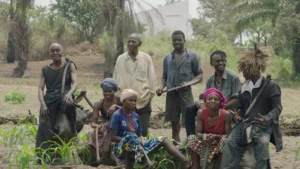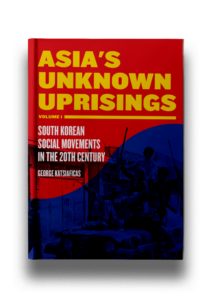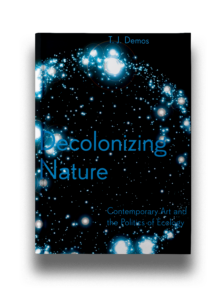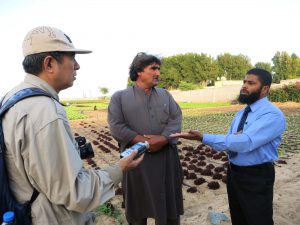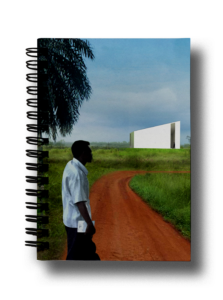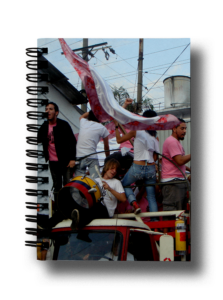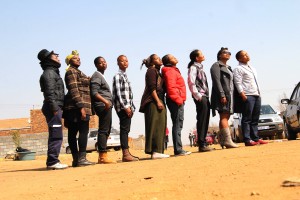Year
2018
Publisher
Duke University Press
Author
Anne Garland Mahler
Annotation
Published in 2018, Anne Garland Mahler’s From the Tricontinental to the Global South is a compelling historical narrative that seeks to read the legacies of the Tricontinental, a Cold War transnational, anti-imperial struggle for racial justice, in the context of contemporary social movements, in particular in the USA. While the references at the time the publication was written were events such as the 2014 restoration of relations between the USA and Cuba, and the protests in Ferguson, Missouri, following the police murder of Michael Brown the same year, the book speaks to the current surge in the global reach and internationalist impulse of Black Lives Matter following the murder of George Floyd in May 2020.
The Tricontinental formed in January 1966 when delegates from liberation movements of 82 nations in Africa, Asia and the Américas gathered in Havana, Cuba, to form an alliance against military and economic imperialism, as such marking the extension into the Americas of better-known Afro-Asian movement that emerged from the 1955 Bandung Conference. One of the principle assertions is that, in comparison with Bandung, the Tricontinental has been somewhat overlooked, and that it has been misunderstood, in Garland Mahler’s argument, as simply a conference that took place in 1966, or as merely a propaganda arm of the revolutionary Cuban state. Instead, Garland Mahler demonstrates the import of the Tricontinental as an ideology that remains profoundly useful for today’s global struggles and social movements, in particular those against anti-Black racism and global capitalism, with the latter viewed in particular through the lens of racial capitalism. To be clear, Garland Mahler does not simply propose a celebratory embrace of the Tricontinental as an ideal model for political activism since, as is well documented, it entailed huge inconsistencies such as ‘its overwhelming silence on racial inequalities within countries with leftist governments [for instance, Cuba] and its tendency to address itself to a heteronormative, masculinist subject’ (p. 5). However, there are many benefits to revisiting the movement. For instance, studying the Tricontinental through its role in the history of Black internationalism and foregrounding the role of Afro-Cuban intellectuals in conceiving of its ideology allows for an acknowledgement of the role of Afro-Latin Americans in the tradition of Black radical thinking.
Key is Garland Mahler’s identification of a paradox at the heart of contemporary anti-systemic politics: on the one hand, protests against global capitalism ‘tend to reproduce the rhetoric of multiculturalism, generating silences around racial inequalities’. On the other hand, ‘movements organised around racial justice tend to frame violence toward racialised populations within a context that is limited to a critique of the state, sidelining a broader consideration of the intersection between racial violence and global capital flows’ (p. 2). To respond to and historicise this disjuncture, Garland Mahler argues for revisiting the Tricontinental movement, which ‘articulated its critique of global capitalism precisely through a focus on racial violence and inequality’. Contemporary progressive social movements, she argues, ‘are reviving key ideological and aesthetic elements of the Tricontinental while leaving aside its primary contribution to the formation of a global struggle against antiblack racism’ (p. 3). This said, with the increased framing, particularly in 2020, of both anti-capitalist protest and struggles for racial justice through the language of decolonization and abolitionism, at least in the USA and Europe, one might argue that the disjuncture identified in the book is beginning at least to lessen, insofar as anti-black racism is increasingly linked in mainstream rhetoric to the global legacies of colonialism and global racial capitalism, and the hypocrisies of state and institutional rhetoric of multiculturalism, following the recent wave of racial justice activism, are progressively being brought to light.
In conversation with scholarship on Third World internationalisms, Black radicalism and discourses around decolonization, the book is not only invaluable for its sustained research on the Tricontinental, but also for mapping discourses around the so-called Global South, transnational solidarity and south–south relations. (Garland Mahler has published extensively on the ‘Global South’ and is founder of ‘Global South Studies: A Collective Publication’, a digital scholarship project that aims to advance the emergent field of Global South Studies through an online platform and collective mapping of key concepts, thinkers, moments and issues within the field.)
Furthermore, in the spirit of the mapping of vocabulary that I am attempting across these entries (for instance, the ‘decolonial’ in relation to the ‘postcolonial’; see Bajorek, Ferdinand, La Colonie), the book is useful in its outlining of the shortcomings of the field of postcolonial studies in relation to the ‘Global South’, with the latter understood both geographically (as a post-Cold War alternative to ‘Third World’) and conceptually — as a critical concept that encapsulates horizontalist approaches to culture and politics, deviating from a centre–periphery model, and refers to the resistant imaginary of a transnational political subject. The argument here is that the ‘Global South’ represents an attempt to recover a legacy (the Cold War ideology of Tricontinentalism) that has been overlooked within the ‘all-encompassing frame’ of postcolonial theory, a field that has had a contentious relation with Latin Americanism and that tends to focus more on national contexts (as with Bandung) and the experience of colonization than a horizontalist ideological project or the oppressed populations in wealthy countries such as the USA. ‘Tricontinentalism’s more fluid notion of power and resistance is parallel to a shift currently taking place in academic scholarship from postcolonial theory to the Global South’ (p. 8).
Throughout Garland Mahler’s analysis is the role of cultural production or what she calls ‘cultural texts’ broadly understood — for instance, the political posters, journals, magazines, communiqués and films produced and circulated from the mid-1960s onwards, all of which one can locate traces of in contemporary visual cultures of protest, albeit often in digitised form. Circulated globally in four languages (English, Spanish, French and sometimes Arabic), Tricontinental materials used simple visual language to create immediate impact for nuanced political issues such as inequality, racism and economic exploitation. As such, the Tricontinental can be read not only as an engine for international political radicalism, but also of its global cultural production.
Shela Sheikh
While it was consistently hypocritically silent on racial inequities within Cuba, the Tricontinental played a pivotal role in generating international solidarity with the U.S. civil rights movement as well as with the antiapartheid struggle in South Africa, and its vision of global resistance was shaped by its foundations in black internationalist thought and by the close involvement of African American and Afro-Latinx activists. From the Tricontinental to the Global South analyzes the expansive cultural production of the Tricontinental and traces the circulation and influence of its discourse in related radical texts from the Americas, including Third Cinema, Cuban revolutionary film, the Nuyorican movement, writings by Black Power and Puerto Rican Young Lords activists, as well as works from contemporary social movements such as the World Social Forum and Black Lives Matter. Through this tracing, this book identifies a set of Tricontinentalist texts, referring to any cultural product that engages explicitly with the aesthetics and especially the discourse of Tricontinentalism, meaning it reflects a deterritorialized vision of imperial power and a recognition of imperialism and racial oppression as interlinked, often using a racial signifier of color to abstractly refer to a broadly conceived transracial political collectivity. Through identifying and analyzing Tricontinentalist texts from the mid-twentieth century to the present day, this book contributes to a transnational reorientation of sites of cultural production whose analysis is often contained within the national and linguistic boundaries that traditionally determine the study of cultural production.
